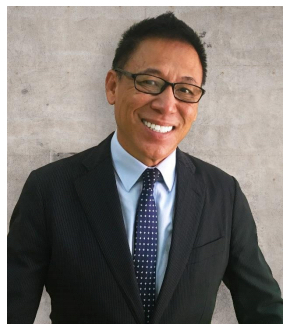FACE TO FACE with James Chew
 James Chew is the Director of Business Development for Southeast Asia for JERDE. Prior to JERDE, he founded and owned VinaPlanners Co Ltd and TPO Vietnam – Singapore. He also worked for Nagecco as Business Development Director, Vingroup JSC as Product Development Director, BRG Group as Director of Project Management, Vung Ro Petroleum JSC as Development Dorector, VinaProjects as Director of Planning, VinaCapital Real Estate as Deputy Managing Director, Real Estate and the Urban Redevelopment Authority of Singapore as Head of Local Planning.
James Chew is the Director of Business Development for Southeast Asia for JERDE. Prior to JERDE, he founded and owned VinaPlanners Co Ltd and TPO Vietnam – Singapore. He also worked for Nagecco as Business Development Director, Vingroup JSC as Product Development Director, BRG Group as Director of Project Management, Vung Ro Petroleum JSC as Development Dorector, VinaProjects as Director of Planning, VinaCapital Real Estate as Deputy Managing Director, Real Estate and the Urban Redevelopment Authority of Singapore as Head of Local Planning.
Chew holds a Bachelor’s Degree in Urban Planning and Master’s Degree in Town Planning from the University of Westminster.
James Chew shared his views with Green in Future on the role JERDE plans to play in Singapore’s architectural development.
Here is an excerpt of the interview.
Can you elaborate a little more on the concept of ‘Placemaking’ that JERDE follows?
In essence, JERDE Placemaking is the art of making places where people want to go. Rather than focus solely on the buildings themselves, we prioritize the spaces between the buildings, where we feel people really experience a project – where they share moments and create memories. We envision place as multi-layered experiential environments that we can, in a sense, orchestrate using architecture, landscape, interiors, environmental graphics, programming, lighting and water features. And because of our small scale we can take a boutique, collaborative approach to the creative process.
Our passion is community building. Our projects are designed to enrich their surroundings and the communities in which they are built, and hopefully act as catalysts for future growth and development.
What are your plans in Singapore and the adjacent South East Asia, now that you have created a base here?
We established our office in Singapore as the regional headquarters for our work in Southeast Asia because of its global communication and transportation links. As we look to build up our Singapore design studio, we are first making a concerted effort in creating brand awareness, and we are confident that our internationally renowned brand of architectural design, planning and placemaking stemming from our global Los Angeles headquarters – the entertainment capital of the world – puts us in a good position to secure projects in Southeast Asia. Looking longer term, JERDE intends to set up a network of smaller design studios in the key emerging nations in the region, like Vietnam and Indonesia, so that we can share our unique brand of design expertise with the local design talent.
Singapore is very different to United States, in terms of the size, architectural style and necessities – how do you plan to delve into the market here?
With regard to the Singapore market, JERDE primarily focuses on its strengths in placemaking for mixed-use, hospitality, and retail projects. This includes revitalization of entertainment and commercial areas like the Singapore River precincts or the repurposing and renovations of the many shopping malls in the heartland of the country. We are constantly monitoring the market in Singapore to identify areas where JERDE specialties are needed. In some cases, this may involve forming strategic alliances with local architects and planners in Singapore to provide design services.
Can you give some details of your current projects in South East Asia?
We have had a great deal of success in securing a number of projects in the region despite being relative newcomers here, though because most are still in the early stages, we can’t yet say a great deal about them publicly. The most advanced are hospitality and mixed-use projects, though we have approximately 20 more in the pipeline.
How does JERDE address the climate change and sustainability factors through design?
There are a number of ways in which we address sustainability directly through design. For instance, bringing nature into our projects and infusing them with greenery has always been a big part of our process. In our Namba Parks project we put a giant park on the rooftop of a mixed-use project, bringing nature into a very dense urban environment. The park featured trees, miniature ponds, shrubbery, and planting beds—all irrigated by recycled water filtered from the greywater of the restaurants within the complex. During the summer, when asphalt can reach a surface temperature of 124 degrees Fahrenheit and concrete is 113, the rooftop park is only 93.
In our Oxigeno project in Costa Rica, our design included wind turbines and over 3,000 solar panels that generate more than 50% of the project’s energy needs.
But to us true sustainability means a holistic approach that includes not just environmental, but social and economic benefits to each project’s local and regional surroundings. That philosophy—of placemaking, of community building, of enriching life experience—is the through-line that carries across all of our work. Our approach goes beyond “green” to produce places for people that enrich all aspects of society and create a focus for the human experience.




